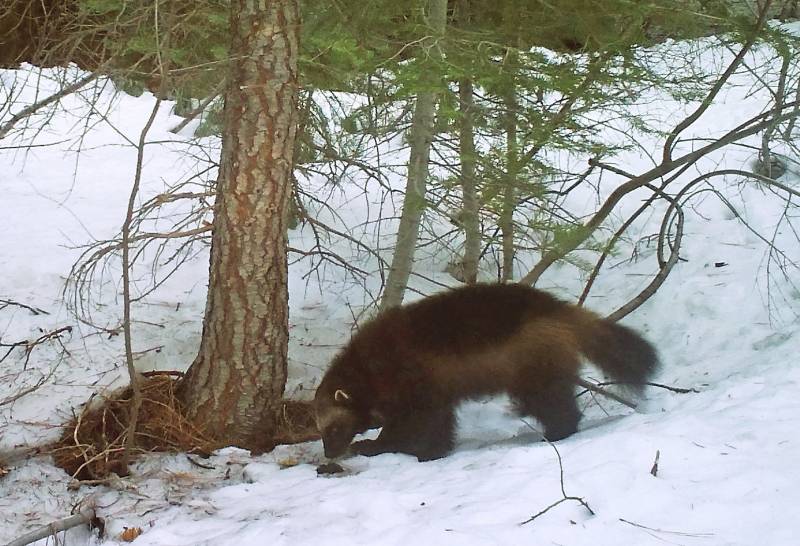The animals resemble small bears and are the world’s largest species of terrestrial weasels. Sometimes called “mountain devils,” they thrive in harsh alpine environments.
Protections were rejected under former President Donald Trump. A federal judge in 2022 ordered the administration of President Joe Biden to make a final decision this week on whether to seek protections.
Republican lawmakers in Montana had urged the administration to delay its decision, claiming the scientists’ estimates were too inaccurate to make a fair call about the dangers faced by wolverines. The lawmakers, led by hard-right conservative Rep. Matt Rosendale, warned that protections could lead to future restrictions on activities allowed in wolverine habitats, including snowmobiling and skiing.
Rosendale said Wednesday he would seek to revoke threatened species status for wolverines at the earliest chance if it’s finalized.
“Whether it’s private property, state property or federal property, if we are limited on the use of that land based upon this status, that’s a taking,” he said. “Is the federal government going to compensate the state for lack of use on state-owned lands? … I don’t think so.”
In September, government scientists conceded some uncertainty about how quickly mountain snowpacks could disappear every spring in areas with wolverines. They also said habitat loss due to climate change — combined with other problems such as increased development — will likely harm wolverine populations.
“The best available information suggests that habitat loss as a result of climate change and other stressors are likely to impact the viability of wolverines in the contiguous U.S. through the remainder of this century,” they concluded.
Fish and Wildlife Service officials said in documents released Wednesday that they were “not concerned” about the effects of existing developments such as ski resorts since wolverines likely already avoid those areas. But winter recreation could hurt wolverines in the future, they said, as activities like backcountry skiing and snowmobiling have become more popular in some areas.
The scientists added that some of those losses could be offset if wolverines can recolonize areas such as California’s Sierra Nevada and Colorado’s Rocky Mountains.
In multiple lawsuits against the Fish and Wildlife Service, environmentalists have argued that wolverines face localized extinction from climate change, habitat fragmentation and low genetic diversity.
The proposal to protect them “gives the wolverine a fighting chance for survival,” said Timothy Preso, an attorney for the group Earthjustice who’s been part of that legal effort.
Another environmental attorney said he still had concerns over legal trapping for other species in areas where wolverines live. The Fish and Wildlife Service proposal would allow some accidental killing of wolverines as long as trappers report any captures within five days and use “best practices” to avoid the animals.
“I’m not sure that’s possible. Wolverines are scavengers – they go everywhere and eat everything. We’ll be taking a closer look at this provision,” said Matt Bishop with the Western Environmental Law Center.
Wolverine populations live in remote areas of Montana, Wyoming, Idaho and Washington.
In recent years, individual animals have been documented in California, Utah, Colorado and Oregon. However, there’s been “no evidence” that the animals are becoming established and breeding in those states, officials said in Wednesday’s proposal.
The Wildlife Service received a petition to protect wolverines in 2000, and the agency recommended protections in 2010. The Obama administration proposed protections and later sought to withdraw them but was blocked by a federal judge who said in 2016 that the snow-dependent animals were “squarely in the path of climate change.”
Protections were rejected in 2020 under Trump based on research suggesting the animals’ prevalence was expanding, not contracting. Federal wildlife officials at the time predicted that despite warming temperatures, enough snow would persist at high elevations for wolverines to den in mountain snowfields each spring.
